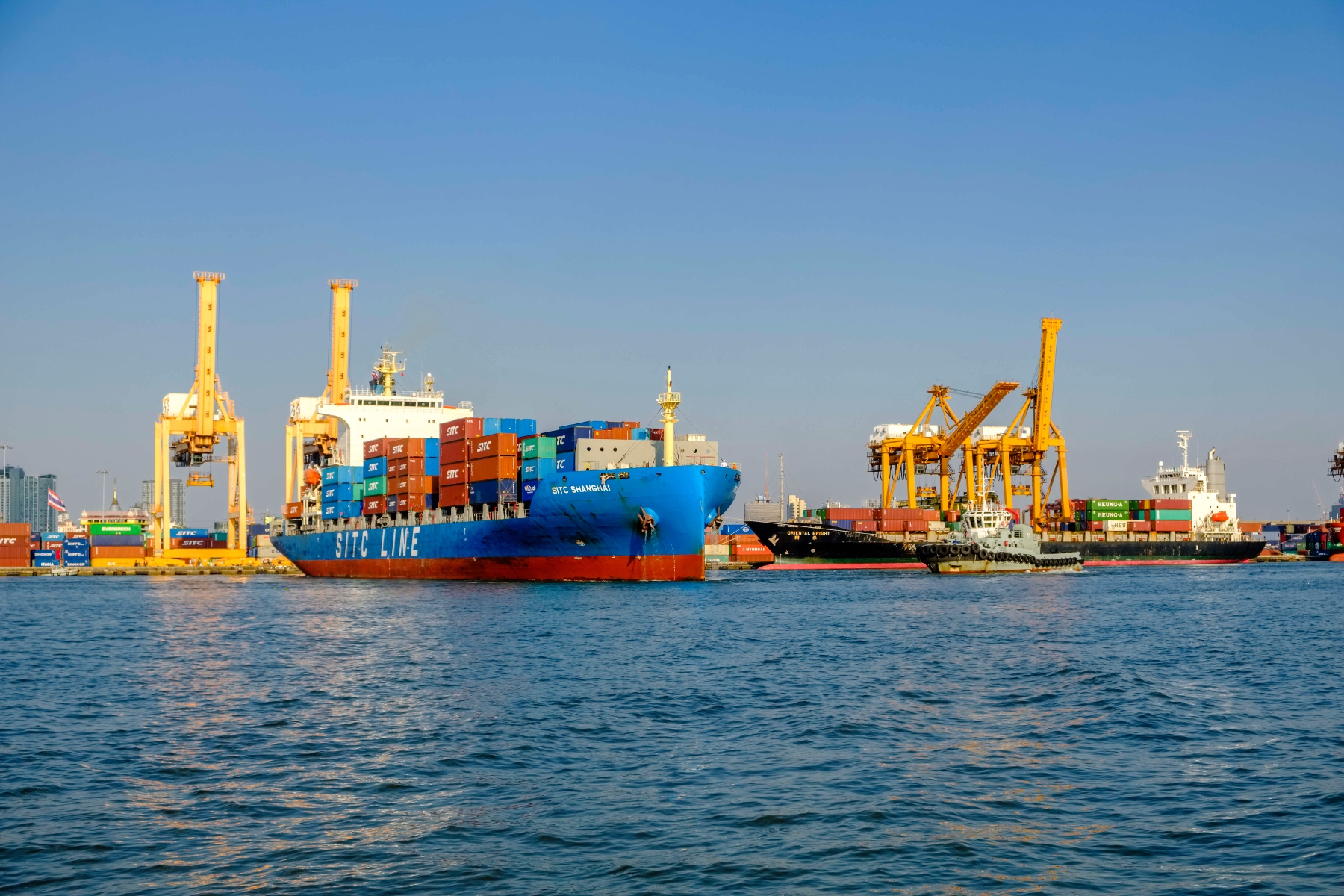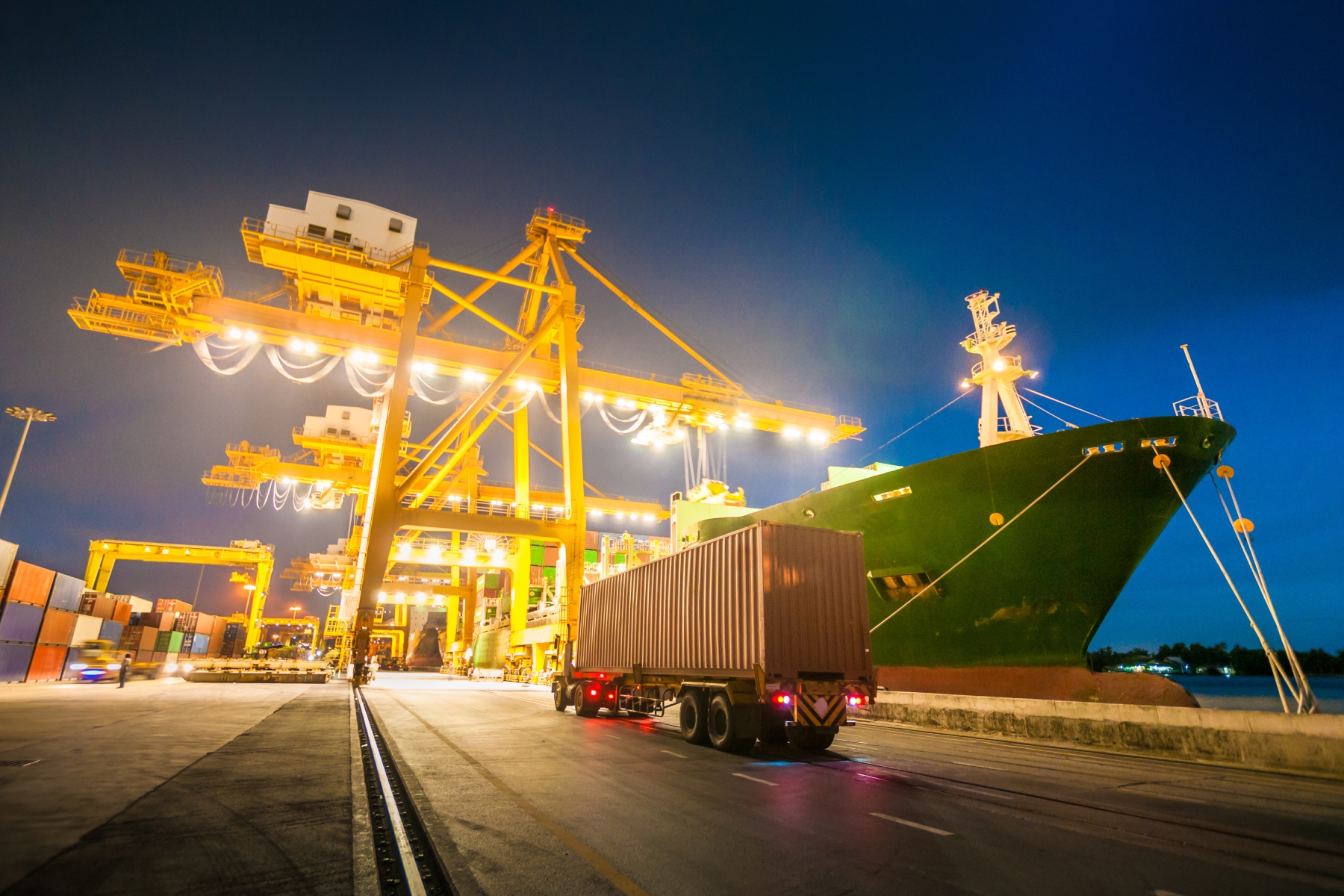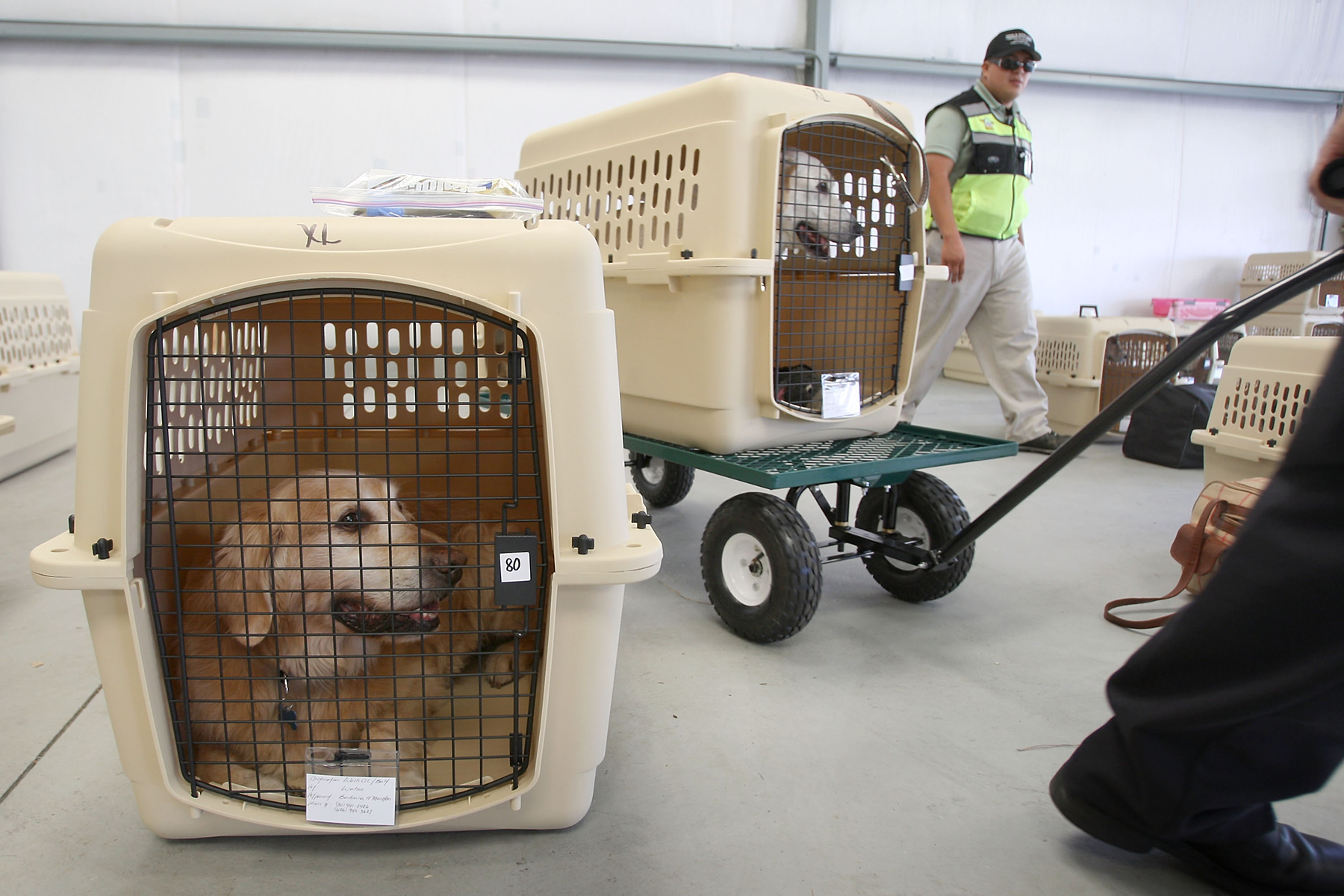So, you’ve sorted your Thai visa and found a great place to rent for the first few months of your stay. Now, your big move is looming, and it’s time to arrange the relocation of all your belongings. While this isn’t cheap, there are, fortunately, many removal options and companies to handle all of the stress.
Here’s everything you need to know about removals to Thailand, including:
Sirelo
It's no secret that moving abroad can be stressful. Sirelo's team of removal advisers is here to help. They provide five free quotes from international shipping companies so you can find the best options at the best prices. Take the stress out of your relocation to Thailand with Sirelo.
Relocating to Thailand from abroad
If you move to Thailand, chances are that you’ll want to bring more than you can carry on the journey. This means you’ll need to check out different relocation options for your belongings. Which one you choose will most likely depend on several factors, including:
- What you want to relocate
- How many things do you want to relocate
- Where you are coming from
- Costs
- Timing

The options for removals to Thailand include air, sea, or road freight, depending on where you travel from.
You will also need to remember that certain things brought into the country, such as pets or vehicles, might be subject to import or customs regulations.
Removals to Thailand using air freight
Air freight is a popular option for expats relocating to Thailand since the country has ten international airports and 30 smaller domestic airfields. Bangkok, the capital, has the two busiest ones: Suvarnabhumi and Don Mueang. There are also options in other major cities, such as Phuket and Chiang Mai.
Who should use air freight?
Air freight is the fastest method of shipping goods overseas, but it is also the most expensive. Therefore, you should only consider it if you either:
- Need the items urgently
- Have a fairly small load to ship, for example, a handful of containers or lightweight items
Since costs depend primarily on shipping weight, sending large furniture items to Thailand by air is not economical. It usually works out cheaper to buy new belongings once you have relocated.
Furthermore, air freight is the worst method for environmental impact. Long-haul flights emit 47 times more greenhouse gasses per ton for each mile than sea freight. They also have an overall carbon footprint 20 to 30 times greater than ocean consignments.
Therefore, if you’re shipping a heavy load, think twice before sending your cargo by plane.
How does air freight work?
The air shipping process to Thailand largely depends on what type of company you use. Many firms offer door-to-door shipping, where your items will be picked up from your home, packed in containers, and delivered to your new Thai residence. These companies handle all the paperwork and customs requirements and then charge the costs to you.
The alternative is to use a service that provides shipment to and from a depot (usually at or close to the relevant airports). You may save on fees but must take responsibility for packaging and handling goods on land.
So, it’s important to check in advance what level of service the removal company offers so that you know exactly what you are paying for and don’t end up stuck at either end of the journey.
Paperwork requirements vary between companies, but you must usually provide shipment addresses and upfront payment. In return, the firm should provide you with a complete inventory of shipped items and information on any damages that occurred before shipping.
If you are sending anything particularly valuable, it’s a good idea to ensure that these are protected with insurance coverage through the shipping firm or separately.
Air freight timings
Air freight is the quickest form of removals to Thailand and typically takes up to 10 days, including customs clearance, though this will depend on what you are shipping. For example, some pets must undergo a quarantine upon arrival, depending on their country of origin.

Regarding booking air cargo slots, you should give yourself a fair amount of time before your relocation date. This is especially true if you use door-to-door services, as the journey takes longer. Although relocation companies often don’t have deadlines, you risk waiting longer as cargo space on your preferred dates may be fully booked if you leave it too late.
Air freight costs
Although air freight is quick and convenient, it has the downside of costing a pretty penny. In fact, analysis by the World Bank shows that it’s around 12 to 16 times more expensive than ocean freight.
As of 2023, you can expect to pay between $3 and $7 per kilogram for air shipment. Weight and size are the most important factors in calculating the price. Other factors to take into consideration include:
- Journey distance: How far the goods have to travel from the country of origin
- Speed: Some firms may offer an express service that delivers your goods a few days quicker, but this will come at an increased fee
- Level of service: You’ll have to pay extra for door-to-door service, where the company deals with all collection and delivery, as well as providing shipping containers
Packing options
If you use a door-to-door removal company to move your things to Thailand, they will usually provide you with industry-standard containers that are included in the total price. However, if you want to pack up your belongings, you must buy your own containers or boxes. A good tip is that aluminum containers (ภาชนะอลูมิเนียม) are sturdy enough to protect your goods and lightweight to reduce shipping costs. What’s more, they’re also environmentally friendly.
If you want to take your sustainability one step further, consider companies offering environment-conscious options such as carbon offsetting. This will minimize your impact when transporting your goods.
On the other hand, if you only ship soft goods such as clothing, you can use cheaper and more sustainable materials such as cardboard boxes. This is because these items are not easily damaged in transit.
Finding an air freight company
There are several comparison tools that you can use to search for suitable air cargo. These include:
Make sure to shop around online for the best option and ask other internationals what methods worked best for them.
Removals to Thailand using sea freight
Those moving to Thailand with a large quantity of heavy or bulky goods, for example, furniture, may want to consider sea freight. This is a common choice for people relocating from all across the globe. So much so that around 90% of goods worldwide are shipped by boat.

Thailand has a very long coastline, and there are 27 seaports altogether in the country. The main ones include:
- Bangkok
- Laem Chabang
- Map Ta Phut
- Rayong
- Phuket
If you select sea freight for your removals to Thailand, your goods will be stored in sturdy shipping containers, and a typical cargo ship can carry around 18,000.
Who should use sea freight?
Sea freight is the most sensible option for moving large or heavy quantities over long distances. Generally, if you ship more than 500kg of belongings, air cargo becomes too expensive and impractical. Ocean shipment is also flexible because it allows more goods, whereas air delivery has more restrictions.
On the downside, shipping by sea takes much longer than air. Delivery timings vary for each shipment, but shipping to Thailand from Europe to North America will usually take a minimum of four to six weeks. Ocean freight can also be less reliable, as it’s more susceptible to delays due to bad weather.
You should also consider whether it’s necessary to ship specific items in the first place. For example, if you rent accommodation in Thailand, it will likely come fully furnished. Bearing that in mind, do you need to send sofas, beds, or tables halfway across the world?
In general, shipping your items by sea is more eco-friendly than air, especially for heavy loads. However, it’s important to note that ocean cargo still has an environmental impact. Vessel pollution is discharged directly into the ocean, which contributes to the acidification of waterways and affects marine life.
Therefore, the most sustainable way of relocating is to minimize the number of overall possessions you bring across.
How does cargo work?
Sea and air cargo are relatively similar in terms of procedures. In other words, you can usually choose between a door-to-door service provider or a company that offers shipping delivery, where you send your items and then collect them from a seaport depot.
You will typically choose between full container load (FCL), where your belongings fill an entire container, and less than container load (LCL), where you share space with others. Some companies also offer a roll-on roll-off (RORO) service where you fill a van that boards a vessel. Container options are typically either 20 or 40 feet in size.

The required documents are generally the same as for air cargo. The company should provide a complete inventory of items in transit. It’s also a good idea to take photos of everything as evidence of condition on departure.
Most firms dealing with removals to Thailand should provide information on customs procedures once things arrive and inform you in advance if there are likely any issues concerning your belongings.
Sea freight timings
Since sea cargo takes longer to process than air, it’s wise to budget extra time to arrange things. Ideally, you should give yourself a good six months before your relocation to start researching companies.
The duration of the shipment depends on your country of origin, as well as what level of service you choose. Most journeys take 6 to 12 weeks, but you may need to allocate additional time for products that will take longer to clear customs. Firms often give you the option of holding your possessions in transit for a limited period, although this may come at an additional cost.
Thai customs usually give those migrating to the country six months to ship personal belongings without incurring additional import fees. If you think bringing your possessions across the seas may take longer than this, make sure to contact customs as soon as possible.
Maritime freight costs
Shipping costs depend on weight, size, journey duration, and what level of service you choose. Expect to pay more for a door-to-door service or if you’ve chosen an express delivery option.
The most crucial factor is cargo weight. Most companies base their fees on how heavy the shipment is, although size is also important. You’ll usually pay more if you have to spread the weight across two containers. On the other hand, if you opt for LCL and take up just part of a container, you will pay a proportion based on the weight of your goods.
On average, sea shipping prices are $2 to 4 per kg (2023 prices).
Packing options
Given that your packages will have to endure a long journey in potentially hazardous conditions, you must ensure that everything is sealed in weatherproof and water-resistant containers. The most common types are coated wooden crates, steel boxes, or plastic containers.
Additionally, make sure you use plenty of bubble wrap or similar cushioning materials to prevent your things from bumping into each other in transit. Your shipping company should discuss different packaging options before sending your goods.
As with air freight, you can reduce your carbon footprint through offsetting. Other eco-friendly tips to consider include:
- Use eco-friendly packaging material
- Reduce, reuse, and recycle the materials
- Reduce the shipment weight
Finding a freight company
You can search for sea shipping companies through reliable comparison tools such as:
To find a company with a reputable environmental performance, you can check ratings on tools like CDP environmental performance database. This measures roughly 15,000 global companies’ performance regarding climate change, deforestation, and water security.
Removals to Thailand using road or rail freight
Land freight across road or rail is another removal option for Thailand. This is especially handy if you live in a nearby country such as China or Malaysia, or if you are relocating regionally between Thai cities.
Road and rail cargo is more suitable for shorter distances or longer journeys if you have smaller or medium-sized loads. It might also be more practical than sending your things by sea, for example, if you live in another Asian country with an easy access route by land.
This option is also more eco-friendly than ocean cargo and is generally quicker. For example, freight from Europe to Thailand takes an average of 15 to 25 days.

However, it is usually more expensive than sea freight (although cheaper than air) and can be less reliable due to more chances of traffic delays or vehicle breakdowns. Thailand has good road and rail networks, but if your goods cross several borders, the likelihood of hold-ups increases.
Besides using large removals or freight forwarding companies, you can hire independent van removal services or rent a vehicle and drive it yourself. Make sure you have a valid license for this.
You can also check out available postal and delivery enterprises for smaller loads within Thailand. Shiply is a good website for finding cross-border man-in-a-van services.
As with other freight methods, costs depend on distance and weight load. Firms usually have both full and partial truckload options.
Still unsure how to move your things? Check out these tips on comparing rail and sea freight.
International removal companies
The easiest way of dealing with a move abroad is to hand everything over to an international relocation company or freight forwarder. These companies handle the whole process and will deal with individual packing and shipping firms to ensure a smooth transportation process. Many even offer to pack and unpack your belongings.
When your goods arrive in Thailand, these companies typically take care of everything, including customs. You can typically choose from different shipping plans depending on your needs and circumstances.

The obvious advantage of choosing an international removal firm for your Thailand relocation is that it takes all the stress out of the move. However, it is a more expensive option as more work is outsourced. International relocations can cost up to $10,000 or more, depending on shipping volume and travel distance.
Transportation plans will also depend on your circumstances and your chosen delivery options. Whichever method you choose, it’s wise to start researching companies and making plans several months before the actual move.
How do you find an international relocation and removal company?
You can search for reputable companies on several comparison websites, including:
If you want to do a bit of digging around to see how different companies fare in terms of performance, you can check these assessments of:
DIY versus using a relocation company for Thailand
As always, there are pros and cons to using an international removal company rather than doing it all yourself.
Advantages include:
- More convenience and less stress
- Removal company has the expertise, knows all the requirements, and is prepared for potential
- Flexible storage options allow you more time to settle into your new place
However, drawbacks include:
- More expensive
- You have less control over the shipping process
- Longer transfer time with door-to-door.
Relocating vehicles and pets to Thailand
Bringing pets to Thailand
If you’re thinking of relocating to Thailand with pets in tow, make sure you check the import requirements. You can bring a dog or a cat to Thailand, but they need to be microchipped, vaccinated against certain diseases, and carry a health certificate.
Requirements for bringing pets to Thailand depend on the type of animal and where you are traveling from, so make sure to do your research ahead of your relocation. You will typically need an import permit and have to register them once inside Thailand.

As with most countries, Thailand has a list of banned species and breeds that you cannot bring to the country. Examples include Pit Bull Terriers and American Staffordshire Terriers.
Importing a car to Thailand
You can import cars and other vehicles to Thailand, but they must pass through Thai Customs (ศุลกากรไทย) and meet certain requirements. If you bring a new or second-hand vehicle into the country for longer than six months, this is considered a permanent rather than temporary import. You will also have to pay high taxes and duties.
The procedure for importing a car to Thailand is quite complex so you should start preparing a few months ahead of your move to make sure you get all of the paperwork sorted in time. Also, bear in mind that you will need a valid license to drive once you arrive in the country.
Customs and importing goods into Thailand
Any belongings you bring into Thailand need to pass through Thai Customs. You can import most household goods, for example, furniture, clothing, and electrical appliances, without paying import duties and taxes. However, this policy only applies if you have a valid Thai visa lasting for at least six months.
Families moving to Thailand can bring up to two of each item. Anything above this is subject to taxation. Bear in mind that these should be used items that you already owned before moving.
If you use an international removal company, they will take care of all aspects of customs clearance for you, including filling out the import declaration forms. They will also let you know if you are liable for any fees. You need to transport your goods to Thailand within six months of moving to qualify for duty exemption.
As is the case in all countries, Thailand has a list of prohibited items that you cannot bring into the country. These include narcotics, pornographic materials, and certain animals. There are also certain restricted goods that need clearance from certain government agencies. These include firearms, plants, food, medicine, and alcoholic beverages.
Useful resources
- 8 Billion Trees – compare the carbon footprint of sea and air freight
- Thai Customs – check what items you can import according to the government customs agency
- Freight Finders – handy comparison tool to compare air freight companies
- Sea Rates – compare sea freight providers with this tool








